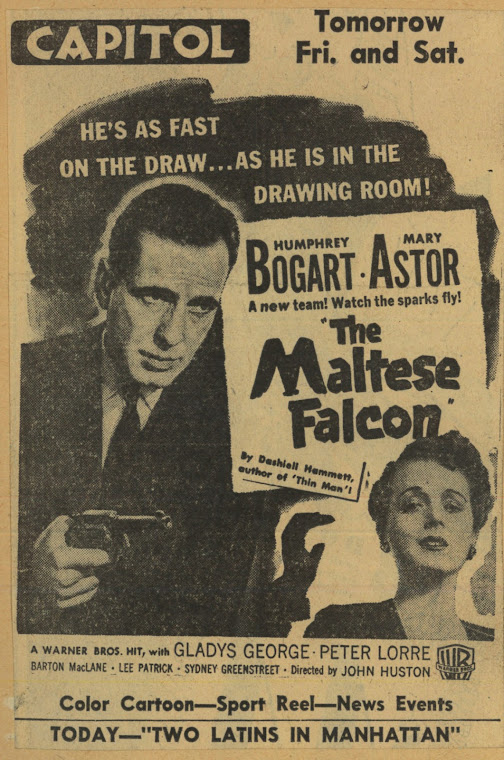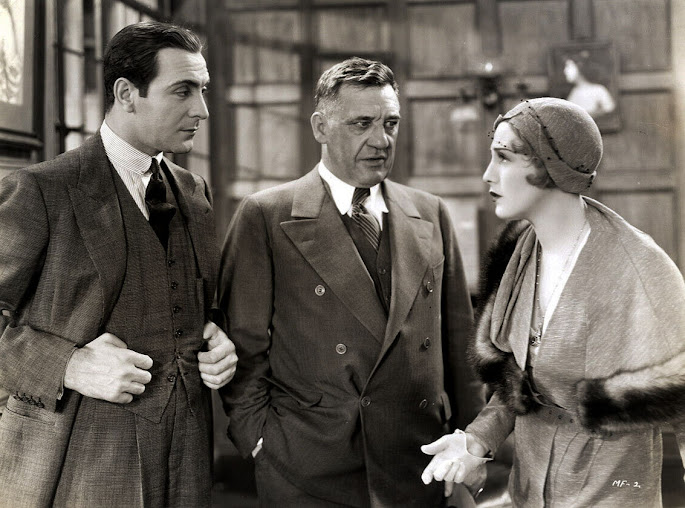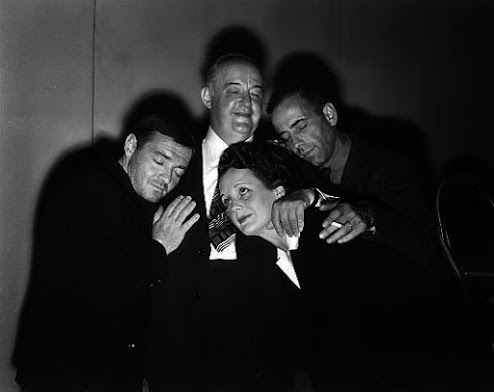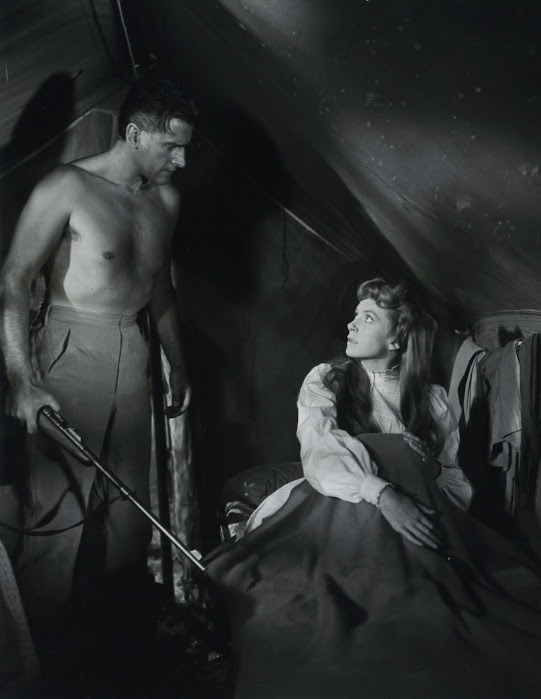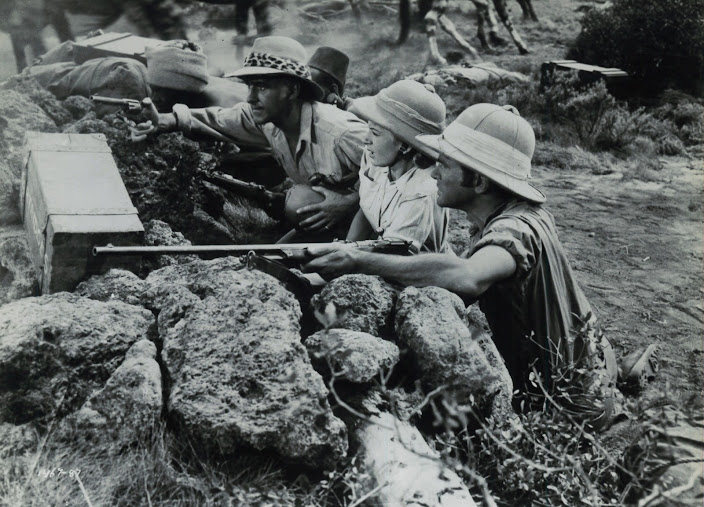Canon Fire #6
Among the One-Hundred: The Maltese Falcon (1941)
Should it matter when The Maltese Falcon first flew my way? Those who repeat-screen regularly will understand, so here and now may be time to affirm while generations who yet call it a seminal show still can give testimony. When did The Maltese Falcon enter your consciousness? That's important where movies represent landmarks of life. Let others be baffled as we relive first sight of the Falcon. Mine was March 1971 after years waiting and thinking the day (rather a late night) would never come. Imagine pining to see the Falcon or most anything today. Thanks to round-clock access, much of what was once rare plays our sleep as well as wake. Precious seeing of what still is scarce requires journey to festivals. Mine for the Falcon went down old Highway 421, still there and thankfully four-lane though not so in 1971 when it crisscrossed every cow path between home and Winston-Salem, my main mission to there for Carolina Theatre rendezvous with King Kong, the Janus reissue with “censored scenes” back after forty years, two days to engage Kong three times (who knew if I would see it again in a theatre, and so far since, indeed have not). The Maltese Falcon was televised cherry atop a first late night, courtesy Channel 2-Greensboro, distant enough from home for signal to sometimes cloud, mere thirty miles however from W-S. Here then were two elephants bagged over a single weekend, luck to beggar belief at the time. What matter if I barely comprehended Falcon’s narrative? (still sort of don’t, which may be essence of its charm). Do or die was seeing The Maltese Falcon lest precious chance never coming back. Futility of requesting movies from local channels was known. I’d wait till college and Channel 36 out of Charlotte for the Falcon to land again.
How often does seeking exceed fulfillment, a wish realized, then knowing you were better off with just the wish? Recent for me was seeing uncommon noir Repeat Performance, of Eagle-Lion 1948 origin with offbeat premise of a murderess reliving year that led up to her crime. Surprise was disappointment with belated surfacing of Repeat Performance (the movie, certainly not the splendid restoration). Was I better off longing for what a pressbook’s cover promised, sparing myself what the film failed to deliver? There is risk for achieving any goal. The list of seek-and-you-shall-finds yield some better unsought, Repeat Performance mine of late. For boyish bafflement with The Maltese Falcon, I did recognize that here was a classic to grow into, a way most of the best ultimately have with watchers. Time improves them while in fact it is us being improved. I cried at the Liberty watching a farewell scene in The Seven Faces of Dr. Lao during 1964, was challenged lately to even get through it (frankly sort of expected Lao languor). Not everything stays precious, some hind sights best left behind. The Maltese Falcon gains upon encore, in fact to point where it is my favorite Bogart, favorite Huston, favorite perhaps of all those connected with it. Rank among the hundred brought Dashiell Hammett’s source novel to surface with pledge to self that whole of the novel at last be read. The Maltese Falcon was initially serialized in mystery mag Black Mask over a five-month period, followers obliged to purchase each issue between September 1929 and January 1930. Must have been popular, because Warners bought the property and released a film version in May 1931.
The Maltese Falcon’s literary reputation was bound by lowly genre placement. Hard-boiled mystery got respect like movies got respect, as in little or none. Fiction serialized on twenty cent pulp was not literature, though it helped when The Maltese Falcon was published hardbound soon after and prior to the 1931 movie. A latter-day Black Mask anthology includes Hammett’s story as initially published, noting “thousands” of differences between the magazine version and what emerged between stiff covers. Mine was chance to read it whole, figuring changes meant expurgations, but nothing hot or bothered here, fact is I gave up halfway in. Was The Maltese Falcon bad, dull, overrated? No … but I got restless … kept seeing Bogart et al in my head and wondering, why not just watch them? Any novel amounts to a commitment unless you speed read which I cannot. Many swear by The Maltese Falcon as Hammett-written and call it best ever detective fiction. Writer for The New Yorker Edmund Wilson demolished the book in a 10-14-44 column. “Why Do People Read Detective Stories” was what Wilson titled his screed, saying he outgrew this sort of literature by the time he was twelve. As to The Maltese Falcon, Hammett “lacked the ability to bring the story to imaginative life.” From Wilson’s 1944 vantage, “The Maltese Falcon … seems not so much above those newspaper picture-strips in which you follow from day to day the ups and downs of a strong-jawed hero and a hardboiled but beautiful adventuress.” One could call Edmund Wilson an elite and a snob and be largely right. As for inferring worthlessness of newspaper picture-strips, I’d refer him to life’s mission of late and great Bill Blackbeard.
Maybe Richard J. Anobile saw Wilson’s remark and got ideas, because in 1974 he came out with a first ever “complete reconstruction of a film in book form, over 1,400 frame blow-up photos shown sequentially and coupled with complete dialogue from the original soundtrack.” In short, an updated newspaper picture-strip. A lot of collectors bought Anobile’s book because it was the only way they could relive The Maltese Falcon whenever it pleased them to do so. Reading essence of Hammett (and adapting J. Huston) plus imagery of Bogey/Bogie throughout was next best thing to television furnishing the Falcon by request. Anobile served useful purpose with this and other volumes in his series until video cassette made them superfluous. I have his group and sometimes pull them down for nostalgia’s sake. The Maltese Falcon, minty upon opening, cracked neatly down its center spine despite my careful handling … a silent commentary on folly for having taken it off the shelf? The film could be had by myriad if expensive ways through the seventies/eighties, a rental at $125 per day from United Artists’ 16mm arm ---trouble was you had to give it back after using. Those less scrupulous could own a print via Gutman-like agency. My supplier had “lab connections” who in 1977 fixed me up with a brand new “original” for $250. Seems shady techs were in possession, if briefly, of UA elements from which order for legit television and rental prints was filled, plus whatever could be backdoored for delectation of no-questions-asking collectors. Here again be forbidden gets of old, satisfaction greater than even 4K honestly come by.
Is it fair to say favorites have a power source to stand unique from the rest? Best of them feed off multiple transformers. One I’d pick off Falcon tree has not been credited enough, Adolph Deutsch’s score. How much has he to do with revisits? A whole Warner sub-genre came of music distinct to style initiated by The Maltese Falcon, carried into follow-ups for which Deutsch composed … The Mask of Dimitrios, All Through the Night, Northern Pursuit … tingling sources from which collectible CD’s came (issued in 1996 and 2005, OOP since). Was Maltese Falcon the most influential film released by Warners during the forties, at least insofar as their own product? Casablanca might not have worked out as it did were it not for the Falcon. A rogue’s gallery of players emerged from it, power source themselves for variants to recur the rest of a decade. Such ensemble, brilliantly combined first for the Falcon, clearly knew from start that theirs was singular reinvent of melodrama and screen suspense. We look at gag posing of Bogart, Astor, and Lorre cuddled around massive Greenstreet and sense the quartet saw change coming. Separately these were ones of a kind, together they'd be ideal group casting for future seasons. Consult Across the Pacific for further dose of Bogart, Astor, and Greenstreet, first with the trailer, wherein Greenstreet shows us the Falcon team has not scattered, would not so long as a public paid, which it did, and gladly, for each shuffle these players could deal.
I was made to feel dumb by a caption appearing neath a still from The Maltese Falcon in a 1964 Castle of Frankenstein magazine, age ten and having discovered monsters firstly, thus limited room to absorb film culture beyond CoF specialty. Pic showed the Falcon cast with John Huston, an image which by the way I have not seen elsewise since, the director and players identified, with caption concluding, “The picture, if you haven’t already guessed, is The Maltese Falcon,” editor Calvin T. Beck’s inference that of course we can guess, in fact we should know. Any idiot will recognize The Maltese Falcon, for hadn’t it run on a hundred late shows? No doubt it had in places other than North Carolina foothills where nobody was then televising the Falcon, late or in daytime, my failure to ID understandable if not excusable. Here came realizing there was much to learn about movies beyond what vampires and werewolves were up to. The seven years before I saw The Maltese Falcon would have seemed an impossible reach had I known it would take so long, for seven years was seven tenths of a life I had lived to then. Wait for the Falcon might as readily take a century. Surfacing later were costume tests for Lee Patrick and Mary Astor. I’d say “Effie” was more Patrick being her offscreen self, doing what was necessary to check fitness of her outfit. Astor on the other hand seems to have channeled “Brigid” for purpose of posing “in character” as she would if this were occasion to stand (or sit) for stills and perform in accordance with dramatic situation being illustrated. As proposed before, actors had to apply themselves to acting as seriously for publicity as for emoting per direction and dialogue.
Go HERE for Greenbriar previous look (2015) at The Maltese Falcon as "collector's" item. Plus HERE (6/20/14) for what a Falcon prop might bring. Then 3/24/17 on the 1931 Maltese Falcon in Broadway first-run. Finally a comparison between Falcon versions (11/9/2006).

